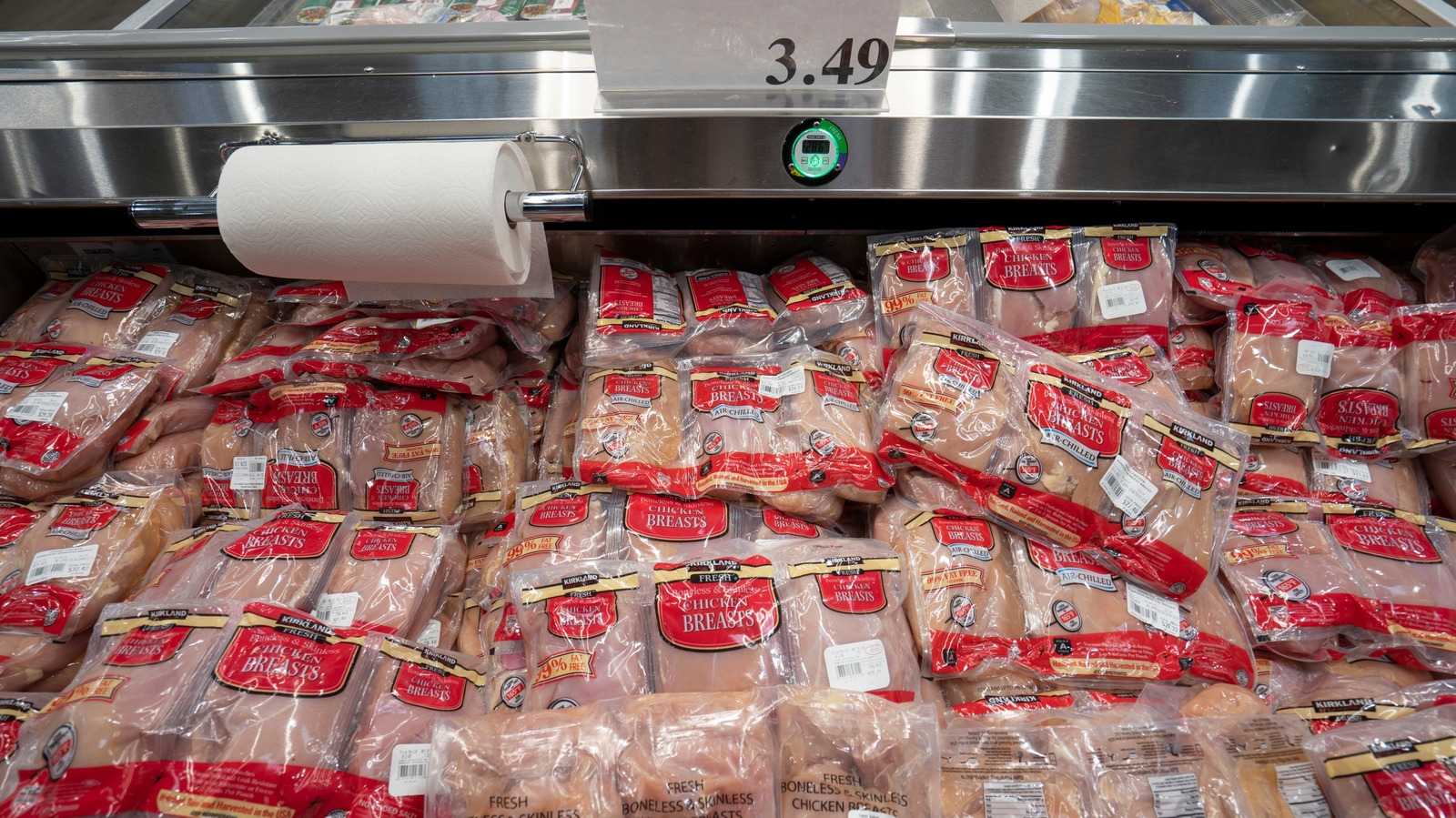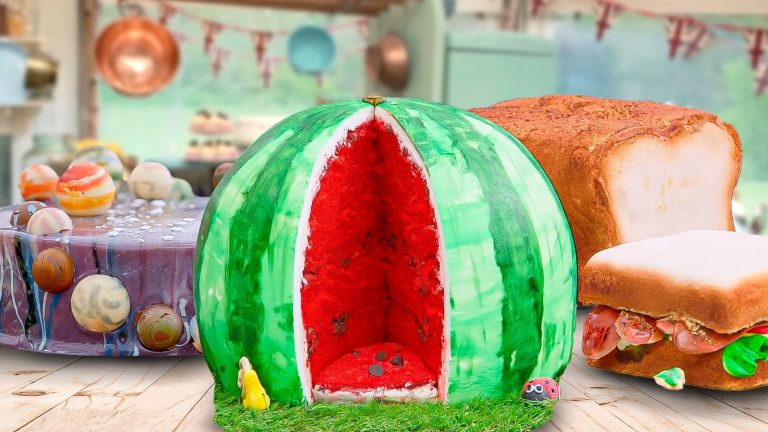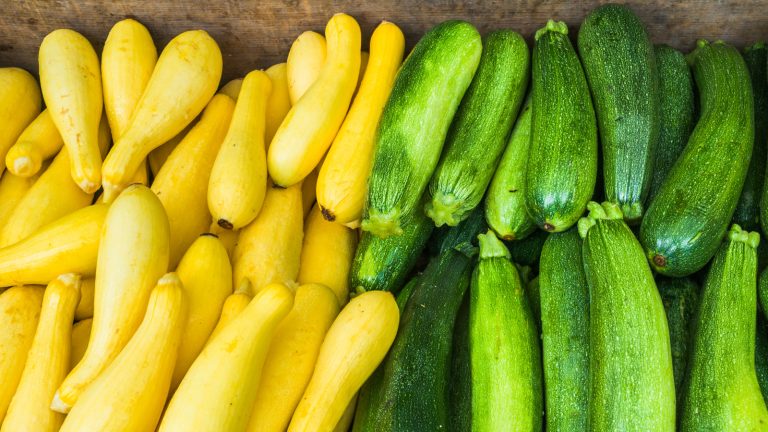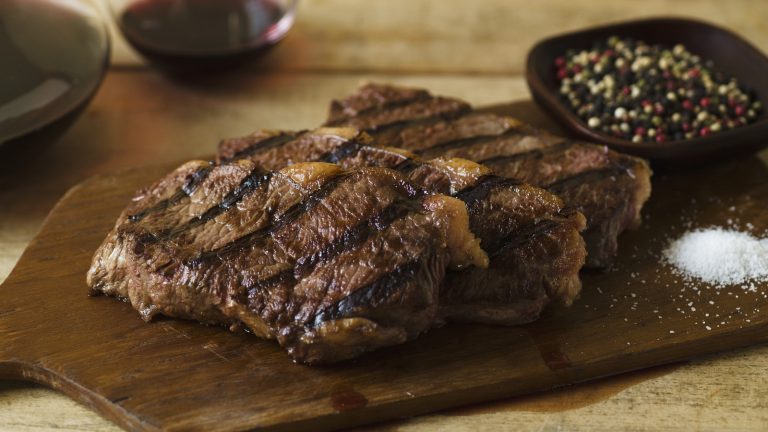Costco is heavenly for value-savvy customers, but it seems like there could be trouble in paradise and the culprit is its chicken breasts. According to disgruntled customers, an unfortunate trend has been developing over recent years: woody-tasting chicken. For those yet to experience this, it’s a disappointing process. You bite into a cut of chicken breast, innocently expecting silky tenderness and plenty of juiciness. Yet the realization is instant. Something is wrong, and it tastes almost … crunchy?
It’s a considerable fall from grace. Skinless chicken breasts previously fared respectably in Tasting Table’s investigation into the best Kirkland Signature staples that deserve your freezer space. While never the most creative dish, Costco’s versions won brownie points for reliability — something that’s now, understandably, being lost. That inconsistency is quickly building a bad reputation, even amongst the most loyal customers.
“After 20+ years of chicken breasts being a staple in my diet, Costco’s woody breasts have ruined chicken for me,” one Reddit user raged, “It’s almost a phobia now.” Interestingly, it’s not just standard Kirkland cuts, either. “Stopped buying Costco organic chicken breasts due to the horrible woody texture,” another commenter added. “It seemed like there was at least 1 woody breast in each package.” Perhaps it’s time you brushed up on how to identify a “woody” chicken breast. Yikes.
What causes woody chicken?
There are claims that Costco’s CEO is already investigating the chain’s tough-tasting problem. Yet, while the jury is still out, it’s widely suspected that unnatural growth patterns are to blame for the meat’s woodiness. When birds are raised in this manner, the muscle essentially bypasses adequate protein development, instead creating a surplus of fat.
Wondering how to avoid accidentally purchasing a woody-tasting chicken? A quick glance is often enough to make an educated decision. The irregularities in intramuscular fat are usually evident to the naked eye. “Look for off-colored bruising and noticeable white striations. When pressed the texture is stiff,” one Reddit user advised. Where possible, buy fresh chicken breasts, too. How will you successfully conduct a “press test” on a cut that’s frozen solid?
Let’s not forget the elephant in the room, either. The biggest reason your chicken is rubbery might be down to you, not Costco. Sometimes, woodiness is a direct consequence of cooking style. Biting into disappointedly textured chicken breast can be disheartening when experimenting with new recipes. Don’t let it knock your confidence, though. Reducing cooking time, introducing moisture, and investing in seasoning are easy fixes for next time. Set yourself up for success by purchasing high-quality chicken and go from there.






